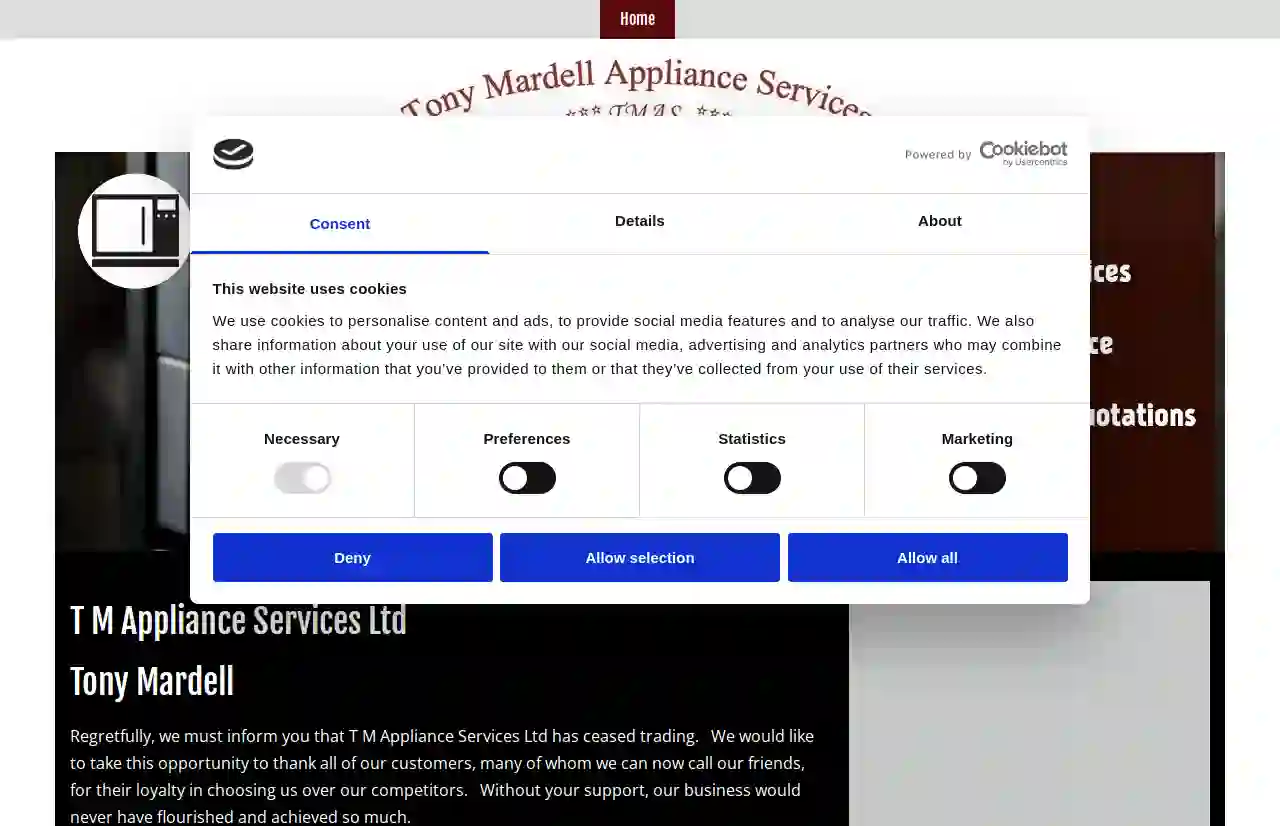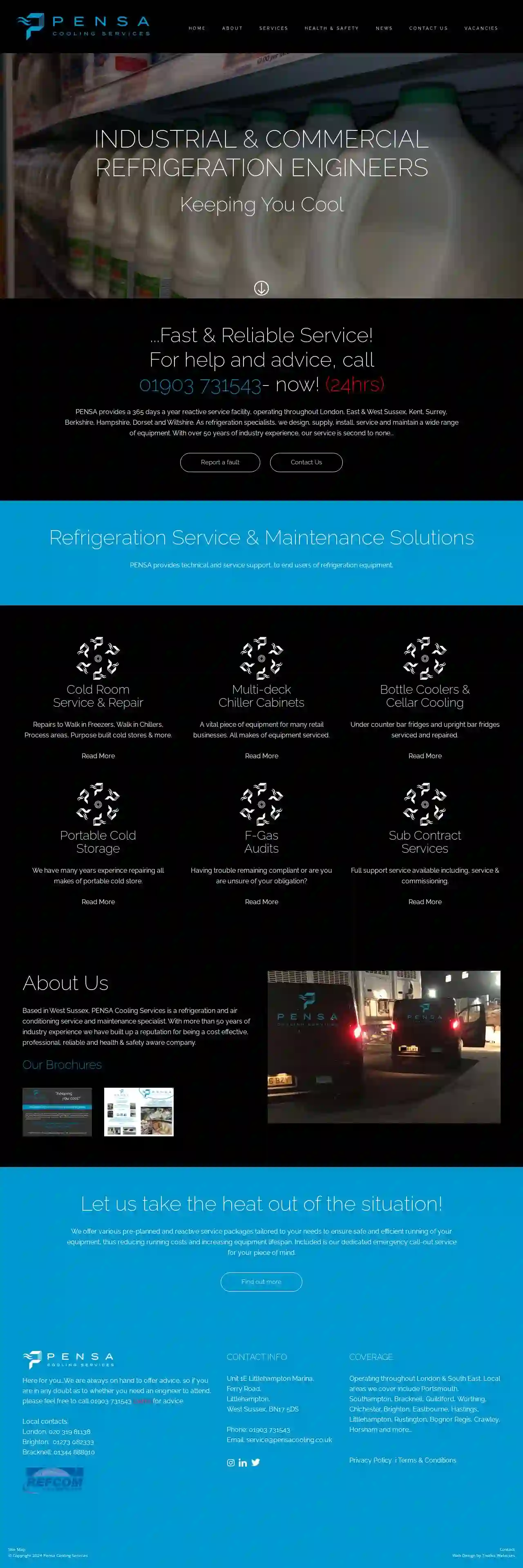Furnace Repair Littlehampton
Find Heating Repair in Littlehampton
Receive multiple Heating Repair quotes for your project today! Compare profiles, reviews, accreditations, portfolio, etc... and choose the best offer.

Shoreline Plumbing, Heating & Gas
553 reviewsRustington, GBBig Enough to Cope, Small Enough to Care. Welcome to Shoreline Plumbing, Heating & Gas. Our simple 4-step process: Get In Touch, Free Survey, Free Quote, and We'll do the rest. We're a professional team providing services such as Underfloor Heating, Plumbing, Heating, Bathroom Installation, Commercial Services, Boiler installation, Boiler Service, Boiler Repair, Oil Boiler Installations, Powerflushing, Gas Safety Checks, Water Softener, and Service Plans.
- Services
- Why Us?
- Our Team
- Testimonials
- Gallery
Get Quote
T M Appliance Services
4.618 reviews30-32 South Street, Worthing, BN14 7LN, GBT M Appliance Services Ltd, formerly owned and operated by Tony Mardell, has regrettably ceased trading. We extend our sincere gratitude to all our valued customers, many of whom have become cherished friends, for their unwavering loyalty and support. Without your patronage, our business would not have achieved the success it has. If you require assistance with domestic appliance repairs or replacements, please contact our colleagues at R Barker (Tarring) Ltd. They can be reached at 01903 785410 or 01903 233680. Their shop is conveniently located at 30-32 South Street, Worthing, West Sussex, BN14 7LN. Thank you for your understanding.
- Services
- Why Us?
- Gallery
Get Quote
Pensa Cooling Services
1Littlehampton, GB- Services
- Why Us?
Get Quote
Over 1,991+ HVAC Contractors on our directory
Our HVAC companies operate in Littlehampton and surroundings!
HVACCompaniesHub has curated and vetted Top HVAC Contractors near Littlehampton. Find a top & trustworthy contractor today.
Frequently Asked Questions about Furnace Repair
- Age: If your furnace is 15-20 years or older, it is likely less efficient and more expensive to operate.
- Frequent Repairs: If your furnace requires constant attention, it may be a better financial decision to replace it than to keep repairing it.
- Increasing Energy Bills: A significant increase in your heating bills could indicate that your furnace is losing efficiency.
- Inconsistent Heating: Uneven temperatures throughout your home or business could mean your furnace isn't functioning as it should.
- Strange Noises: Listen for odd noises coming from the unit.
- Yellow Flame: A healthy furnace flame should be blue. A yellow flame can indicate a problem with the burners or venting. A yellow flame requires immediate attention.
- Dry Air: If you notice excessive dryness, a new furnace could provide increased comfort.
- Turn off the furnace: Set the thermostat to the 'off' position.
- Turn off the power: Locate the circuit breaker for your furnace and switch it off.
- Wait: Wait a few minutes for the system to reset.
- Turn the power back on: Flip the circuit breaker back to the 'on' position.
- Turn on the furnace: Turn the thermostat back on and set it to your desired temperature.
- Change or Clean Air Filters: Dirty filters restrict airflow and make the system work harder. If you have pets or allergies, changing the filter every month is recommended.
- Annual Inspection and Tune-Up: Before the heating season begins, it's recommended to have a qualified technician perform an annual inspection and tune-up. A professional technician can also test for carbon monoxide leaks and other safety hazards.
- Clean the Area Around the Furnace: Keep the area around your furnace clean and free of debris. This helps to prevent dust and dirt from entering the system and improves airflow.
- Check the Thermostat: Make sure your thermostat is functioning properly and set to the desired temperature.
- Inspect Ductwork: Inspect air ducts for any leaks or damage and have them repaired to optimize heating.
What are the signs that my furnace needs to be replaced?
What is the difference between a single-stage and two-stage furnace?
Single-stage furnaces have only one setting, they either operate at 100% or are off. This can lead to uneven heating and fluctuating bills because the furnace is either running at its maximum setting or completely off..
Two-stage furnaces can run at both low and high speed. They work by running at a lower speed most of the time and switching to high speed when necessary.Two-stage furnaces provide enhanced home comfort and energy savings compared to single-stage models.
How do I reset my furnace?
How do I maintain my furnace?
What are the signs that my furnace needs to be replaced?
- Age: If your furnace is 15-20 years or older, it is likely less efficient and more prone to breakdowns.
- Frequent Repairs: If your furnace requires constant attention, it may be a better financial decision to replace it than to continue fixing it.
- Increasing Energy Bills: A significant increase in your heating bills might suggest that your furnace is losing efficiency.
- Inconsistent Heating: Uneven temperatures throughout your home or business could mean your furnace is no longer distributing heat evenly.
- Strange Noises: Listen for odd noises coming from the unit.
- Yellow Flame: A healthy furnace flame should be blue. A yellow flame can indicate a problem with the burners or venting. If you see a yellow flame, contact a qualified HVAC technician right away.
- Dry Air: If you notice excessive dryness, a new furnace could provide increased comfort.
What is the difference between a single-stage and two-stage furnace?
Single-stage furnaces have only one setting, they either operate at 100% or are off. This can lead to temperature fluctuations and higher energy bills because the furnace is either running at its maximum setting or completely off..
Two-stage furnaces can run at both low and high speed. They work by running at a lower speed most of the time and switching to high speed when necessary.Two-stage furnaces provide enhanced home comfort and energy savings compared to single-stage models.
How do I reset my furnace?
- Turn off the furnace: Set the thermostat to the 'off' position.
- Turn off the power: Locate the circuit breaker for your furnace and switch it off.
- Wait: Wait a few minutes for the system to reset.
- Turn the power back on: Flip the circuit breaker back to the 'on' position.
- Turn on the furnace: Turn the thermostat back on and set it to your desired temperature.
How do I maintain my furnace?
- Change or Clean Air Filters: Dirty filters restrict airflow and make the system work harder. If you have pets or allergies, replace filters more frequently.
- Annual Inspection and Tune-Up: It's essential to schedule professional furnace maintenance once a year, preferably before the start of the heating season.. This will maximize efficiency and minimize the risk of breakdowns.
- Clean the Area Around the Furnace: Keep the area around your furnace clean and free of debris. Maintain a clear space around the furnace for optimal operation.
- Check the Thermostat: Make sure your thermostat is working correctly and set to the desired temperature.
- Inspect Ductwork: Inspect your ductwork for any leaks or damage and have them repaired to prevent energy loss and maintain efficient airflow.